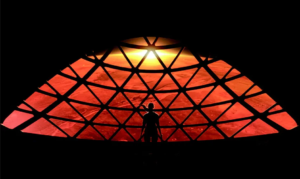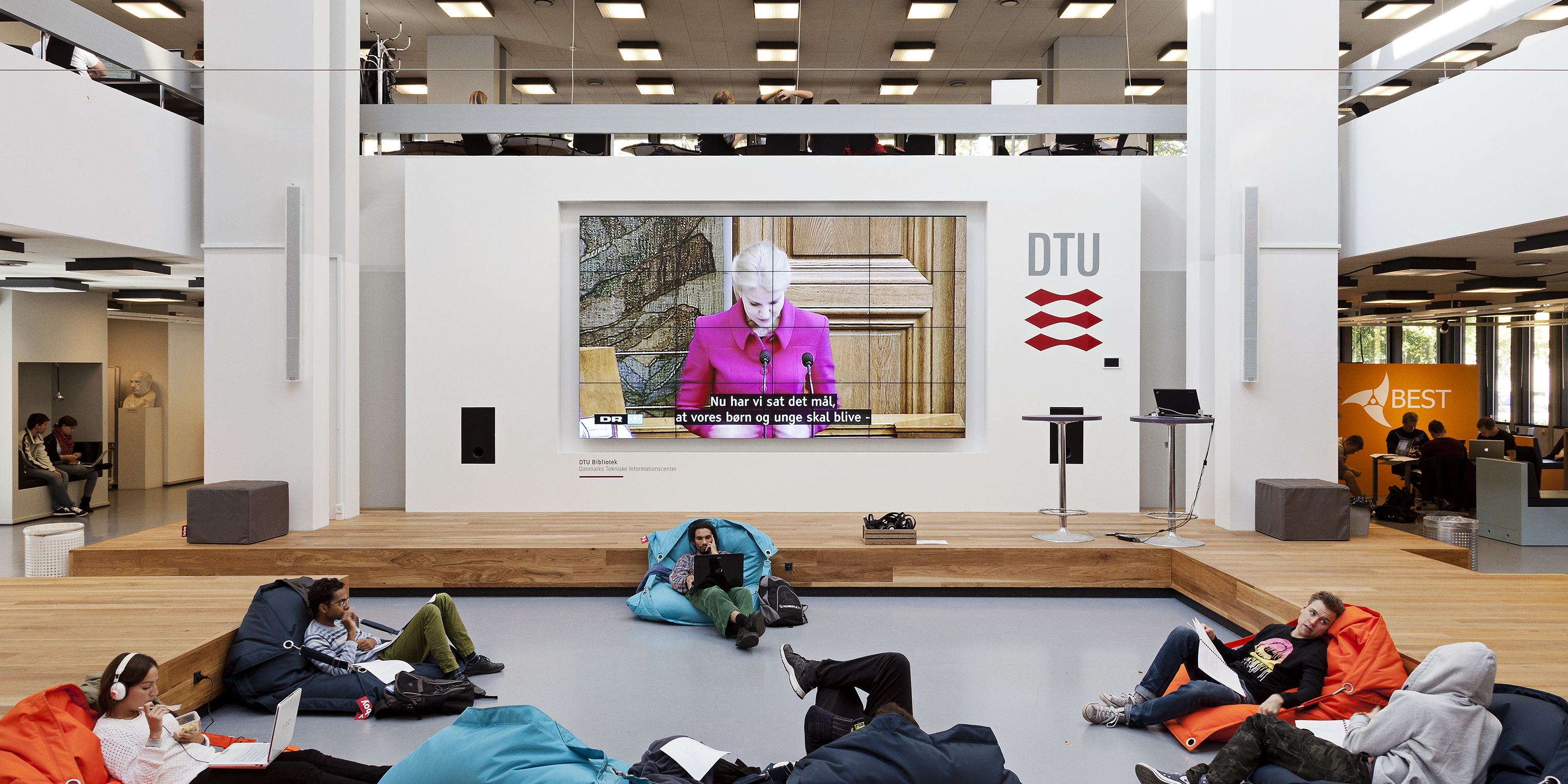
An artist’s impression of a Martian colonist. Photograph: SpaceX/Elon Musk
Although some people falsely think that he’s an alien, Elon Musk is actually a world-renowned entrepreneur and businessman whose dream is to conquer space and make it “the next place to be “. This vision underlines the mission of SpaceX, a company dedicated to making space travel possible and affordable.
The starting point will be Mars. In the words of Musk “We want to make sure there’s enough of a seed of civilization somewhere else, to bring civilization back and perhaps shorten the length of the dark ages. I think that’s why it’s important to get a self-sustaining base, ideally on Mars”. So, to ensure the future and sustainability of mankind after a possible third world war, a life on Mars seems to be a must. Considering that man first walked on the moon in 1969, the idea of a settlement on the red planet by 2030 doesn’t seem that crazy after all.
Yet, throughout the ages, what has guaranteed human sustainability beyond land, water and oxygen, was the knowledge carried over from generation to generation. As an information science student, I couldn’t help but think about information-accessibility in the future, especially on another planet. Libraries for instance, were always seen as the ultimate source of information. However, in the age of information technology, our view of them is changing: some say they will continue to shrink rapidly until they vanish and others guarantee their immortality, as they are bound to evolve hand in hand with the latest technologies.
So, will libraries survive the technological revolution to exist on Mars by 2030?
The technological revolution has indeed changed the way we search for and use information. It has created a shift towards digital sources which has in turn led to the birth of a new generation of libraries; namely hybrid and smart libraries. The hybrid library is the gradual transition of traditional libraries from tangible places in which print-based materials are acquired and made available for patrons, to digital spaces acting as gateways to networked resources (James Barnett, 2017)
As for the phenomenon of smart libraries, the concept has evolved alongside the vision of a “smart city” that relies on data collection from citizens and public infrastructures to run the city’s services more efficiently (Linda Freyberg, 2018). In this case, what would the integration of libraries within such a model mean? and when could we start calling them “smart”?
These are questions I wouldn’t have the answer to without having come across the following article: “How to make the library smart? The conceptualization of the smart library” which I was introduced to during a seminar on “information services management” that was led by three of my classmates last November. In this article, the smart library is defined as the perfect combination of three main dimensions: smart technology, smart service and smart people:
Smart technology
To qualify it as “smart”, the library should first of all, use a variety of technologies that interact with one another on different layers in order to execute the library’s functions. Those layers include permanent ones that take over the collection of data related to patrons and their behaviours through diverse devices like sensors, cameras, RFID…
The second criteria is a computer layer where all the data collected is analysed in order to comprehend the user’s behaviour, predict future needs and offer personalised services. To achieve the above, smart libraries rely on different technologies such as artificial intelligence and data mining.
Finally, we have the communication layer whose purpose is to give users the right information at the right moment with the right tool. It uses virtual reality technology, information push technology and a variety of other instruments to offer a simple, quick and customisable access to information.
Smart service
The outcome of the previous complex technological framework is a smart service that is based on resource interaction and utilisation. This high level of interaction is established thanks to a diverse panel of technologies, like cross-sectoral information sharing and cross-media integration. The ultimate aim of all of this, is to enhance user experience and the quality of library services.
Smart people
The primary focus of the smart library is to build users’ loyalty by customising the library’s services and thereby their ability to find and use information. The key here is to define the main profiles of the library’s users in line with their ability to find and use information, and then adapt the library’s resources and services according to those profiles to help users cultivate their knowledge.
What about the librarian?
Librarians are not excluded from the equation, as “nobody can develop a smart library, but its own smart stuff ” (Ian Martin Johnson, 2012). Consequently, librarians needs to get the right training to maintain the quality level of the smart services on offer. They also need to update their knowledge continuously in order to serve and improve library services in the long-run.
The “smart” element goes even further and influences the design of the library: “less for shelves and more for labs”. This goes hand in hand with the smart vision of boosting not only the learning process, but also the creative one which I believe would revolutionise the next generation of libraries and would require the redefinition of a library’s mission.
the new heart of student life at DTU
Therefore, if smart libraries are the inevitable consequence of the technological evolution, having one on Mars by 2030 is not an option for Musk but a necessity. Whatever form they will take, libraries are more relevant than ever. Today, they are not only the source, but also the place where knowledge is created. As for tomorrow, whether on earth or Mars, it’s the future that will be created through them.
Bibliography:
BARNETT, James, 2017. What Will Libraries of the Future Look Like? | Wiley. In : [en ligne]. 7 juin 2017. [Consulté le 16 décembre 2018]. Disponible à l’adresse : https://hub.wiley.com/community/exchanges/discover/blog/2017/06/06/what-will-libraries-of-the-future-look-like?referrer=exchang.
BOLT, Nancy, 2014. Libraries from Now On: Imagining the Future of Libraries ALA Summit on the Future of Libraries [en ligne]. The Library of Congress (LOC). American Library Association (ALA). Disponible à l’adresse : http://www.ala.org/tools/sites/ala.org.tools/files/content/LibraryoftheFuture/LibrariesFromNowOn_ALASummitOnTheFutureofLibraries_FinalReport.pdf.
CAO, Gaohui, LIANG, Mengli et LI, Xuguang, 2018. How to make the library smart? The conceptualization of the smart library. In : The Electronic Library. 27 septembre 2018. Vol. 36, n° 5, p. 811‑825. DOI 10.1108/EL-11-2017-0248.
FREYBERG, Linda, 2018. Smart Libraries – buzz word or tautology? In : [en ligne]. 2 juillet 2018. [Consulté le 22 décembre 2018]. DOI 10.5281/zenodo.1302988. Disponible à l’adresse : https://elephantinthelab.org/smart-libraries/.
JOHNSON, Ian, 2012. Smart Cities, Smart Libraries, and Smart Librarians. In : [en ligne]. S.l. : s.n. 18 juillet 2012. [Consulté le 16 décembre 2018]. Disponible à l’adresse : https://www.researchgate.net/publication/301229590_Smart_Cities_Smart_Libraries_and_Smart_Librarians.
PRUITT, Annie, JUNE 30 et 2015, [sans date]. John Palfrey on the importance of libraries in the digital information age (video). In : Harvard Law Today [en ligne]. [Consulté le 21 décembre 2018]. Disponible à l’adresse : https://today.law.harvard.edu/john-palfrey-on-the-importance-of-libraries-in-the-digital-information-age/.
WENBORN, Chloe, 2018. How Technology Is Changing the Future of Libraries | Wiley. In : [en ligne]. 11 avril 2018. [Consulté le 16 décembre 2018]. Disponible à l’adresse : https://hub.wiley.com/community/exchanges/discover/blog/2018/04/10/how-technology-is-changing-the-future-of-libraries.




Laisser un commentaire